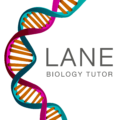Download the pdf. worksheets below and read these explanations regarding common student misconceptions.The topics include:
- Diet
- Digestion
- The Heart
- Blood Vessels & Blood
- Respiration
Digestion
Bile is produced in the liver and not the gallbladder. It is stored in the gall bladder.
Vitamins and minerals do not need to be digested. They can be absorbed straight into the blood because they are small enough.
Digestion does not start in the stomach. It starts in the mouth with chewing (mechanical) and saliva containing amylase (chemical) for starch.
The small intestine absorbs food molecules and water. The large intestine just absorbs water
The small intestine is much longer than the large intestine. It is around 7m while the large intestine is round 1.5m
The interior of the gastro intestinal (GI) tract is not considered inside the body as the contents have not been absorbed into the blood.
Digestion does not release energy. Digestion breaks down large insoluble molecules into smaller soluble molecules to be absorbed into the blood.
Releasing faeces is not excretion it is egestion as the indigested food material has not been made from your cell´s metabolic waste. Carbon dioxide and urea are excreted from the body.
The heart, blood vessels and blood
The pulmonary artery is the only artery to carry deoxygenated blood. It is called an artery and not a vein because it is taking blood away from the heart. The same but opposite applies to the pulmonary vein.
Not true: Veins are blue and contain blue blood. They appear blue through the skin due to how light is diffused on the skin. Deoxygenated blood is red like oxygenated blood but is a little darker red. The misconception that arteries are red in colour and veins are blue is also reinforced in most textbooks with a diagram of the circulatory system depicting red arteries and blue veins. This is done to show clearly show where the veins and arteries are and for some reason red and blue are normally selected for the diagram.
Humans have a double circulation so oxygenated blood after passing though the lungs comes back to the heard so it can be pushed around the body at much higher pressure
Blood pressure is lower in the veins than the capillaries. Pressure drops from arteries – capillaries – veins.
Not a misconception but students often forget to state that gas exchange in the capillaries also involves carbon dioxide removal into blood and not just oxygen into tissues.
Respiration
Possibly the most common misconception with GCSE Biology students: Respiration is not breathing.
Breathing occurs in the lungs and is the process of taking air in and expelling air. The organ system involved is called the respiratory system. Respiration is a chemical reaction which happens inside cells. It releases energy from food molecules.
Respiration happens in all cells not just muscle cells.
Human Digestion + Transport Worksheets pdf.
Like these GCSE worksheets?
You can purchase the GCSE Bundle 2 pack with this link.
